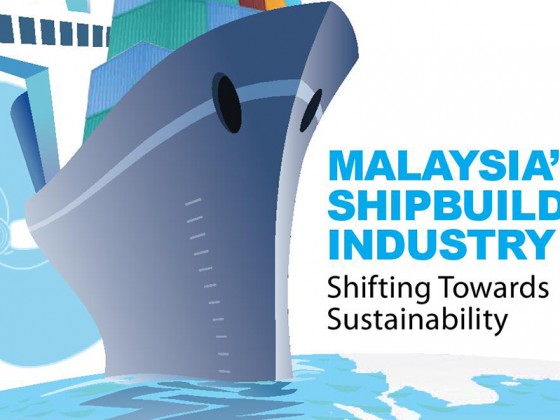Innovation in the age of disruption and Black Swans
by | Azim Pawanchik, Alpha Catalyst Consulting & Dr. Suraya Sulaiman
Over the past decade, quality, efficiency and safety have, to a certain degree permeated many organizations, forming an integral component of the organization’s quest to be competitive.
However, in recent years, the hype has been to add another word to the companies’ load of initiatives; Innovation! Despite the move, many organizations have not been successful at diffusing innovation throughout their organization, seemingly remaining just a buzz word.
Nonetheless, as organizational leaders sit in their lofty pseudo cocoon, when many giants are crashing down around them, are they truly aware of the need for their organization to innovate?
In an era where change occurs in the blink of an eye, investments into foresight and scenarios planning are important to guide organizations develop strategies for future investments
However equally important are how these strategies are translated into action and the willingness of the organization to change pathways with the emergence of new events or circumstances.
In late July 2011, floodwaters drowned a third of Thailand causing billions of dollars in damage, putting 14,000 factories underwater and nearly 700,000 people temporarily out of work. Toyota, Honda and Western Digital are only a few of the giants that had to suspend their operations in Thailand. How would any foresight or scenarios planning session have predicted this disaster? If this were your predicament, how agile is your organization in exploring new strategies and how well would you be able to implement them?
Disruptive Innovation and Black Swans
Clayton Christensen in his book The Innovator’s Dilemma made famous the concept of disruptive innovation, where the introduction of a new technology or business model disrupts the traditional market practices. This is the space where CDs replaced the 3-inch floppy disk drives but are now on the endangered list themselves due to the emergence of mega-thumb drives/flash drives. Digital photography has also practically caused the extinction of the 35mm film rolls. In more recent times, Skype disrupted revenues of many traditional telecommunication companies as consumers were able to communicate globally at a fraction of the cost.
Black swans, also cause disruption and the causative factor may be an environmental, economic, political, societal or a technological event. ‘Black Swan’ was a term made popular by Nassim Nicholas Taleb, a finance professor and former Wall Street trader, and it referred to an event or occurrence that deviates beyond what is normally expected of a situation or one that would be extremely difficult to predict
and commonly has an extreme impact. Situations like the floods in Thailand and its ensuing effect on the automotive, electronics and food supply chain in Asia; the earthquake in Japan and its impact on the Nuclear Power Generation industry; even the political unrests and protest in the Middle East and North Africa with its impact on oil prices would encompass black swans.
The combination of these events and circumstances has enormous implications on organizations. Not to undermine the role that foresight and scenarios planning play, organizations, we feel must balance between using the foresight information to drive long term strategy yet be sensitive to the emergence and impact of disruptive innovations and black swans at the same time. Organizations need to be dexterous enough to deviate from the charted course and redirect resources to more valuable projects. Secondly, organizations should explore more effective strategies towards creating innovations; this may range from strategic collaborations with external parties or tapping on channels for open innovation. Organizations would doubly benefit from such activities from a financial and risk management perspective. On the upside, organizations need to explore how the disruptive situations may be used to their own advantage. In short we need to look at how we define innovation and more importantly, how we approach innovation.
What is Innovation?
In the 2010 Malaysian Innovation Climate Survey Report, which collated views from employees in organizations, many Malaysians viewed innovation as strongly related to creativity, R&D and technology, and least associated it with risk and processes as shown in Figure A. In fact many current incentives and innovation initiatives are strongly tied to R&D, science and technology and less on processes, services and business models.

When we look at definitions, the US Advisory Committee on Measuring Innovation in the Twenty-First Century Economy describes innovation as “the design, invention, development and/or implementation of new or altered products, organizational structures, or business models for the purpose of creating new value for customers and financial returns for the firm.” Malaysia’s own Innovation Bill 2010 defines innovation as “any idea or knowledge in whatever form which brings about changes in the form of product, service or process, resulting in a positive impact to the economy, business, public service delivery system, social well-being or the environment”.
With so many definitions floating around, it is understandable that there is much confusion on what is innovation exactly. The OECD has also defined innovation in four areas – product innovation, process innovation (a markedly improved production or delivery method), marketing innovation (involves a new marketing method involving significant changes in product design or packaging, product placement, promotion or pricing) and organizational innovation (involves introducing a new organizational method in the firm’s business practices, workplace organization or external relations). According to Figure B, Malaysian companies are already practicing these various types of innovation; however the majority focused much more on incremental innovation with a smattering few that practiced radical innovation.In the era of disruptive innovation and black swans, organizations need to broaden the definition of innovation and not limit themselves to R&D, patents and technology, but to focus more on value creation. We believe that innovation should be defined as “the introduction of new products, services, processes, technologies, business models or management practices that have created significant value (financial/non-financial) for an organization.” At the end of it all, organizations need to innovate the way that they approach innovation.
Approaches to Innovation
Our analysis reveals three distinct approaches towards innovation; 1.0 which is predominantly driven by the lone inventor or technopreneur, producing products with very limited resources. Innovation 2.0 on the other hand has a large budget, 3.0 is frequently inspired by organizational leaders who create a strong innovation culture and mindset within the organization. The Innovation 3.0 approach also regularly utilizes the web and open innovation.
The US, with its strong start-up culture, venture capital and angel investor funding and strong IPO market, is a brilliant place for Innovation 1.0 to flourish. In some cases, the initial investment needed is not enormous. Another Innovation 1.0 example is Rovio Mobile, a Finnish computer game developer, which was initiated in 2003 by three students from Helsinki University of Technology who went on to create Angry Birds in 2009. Angry Birds is a puzzle video game which as of March 2011, had been downloaded over 100 million times. This game has been called the largest mobile app success the world has seen so far. Resulting from this success, in March 2011 Rovio raised US$42 million in Venture Capital Funding.
Microsoft and IBM are excellent examples of Innovation 2.0. Since 2002, IBM has spent almost US$50 billion in R&D and has been the top producer of patents in the US patent list for 18 consecutive years! In 2010 alone, IBM was awarded 5,896 US patents, the first time any company has been awarded over 5,000 patents in a single year.

What then are examples of Innovation 3.0 around the world?
Grameen Bank (Bangladesh) – a micro finance organization which makes small loans to the impoverished without collateral. The idea was conceived from the realization that the poor had skills that were underutilized. This group-based credit approach uses peer-pressure to ensure borrowers comply with repayment schemes. This concept, a brainchild of Professor Muhammad Yunus has been duplicated around the world, earning him a Nobel Peace Prize in 2006.
Jaipur Foot (India) – This was first conceived due to the unavailability of affordable foot prosthesis. For the millions who lost their leg due to land mines, this was a revolution. While prosthesis for a similar level of amputation can cost several thousand dollars in the U.S., the Jaipur Foot costs only US$28. Currently the technology is adopted within many land-mine littered countries. In Cambodia, part of the foot’s rubber components is scavenged from truck tires. In Afghanistan, craftsmen hammer the foot together out of spent artillery shells.
Apple (USA) – Apple, which started life as Apple Computer, Inc. has evolved to become the most valuable technology company in the world. Apple was awarded a mere 563 patents in 2010 while IBM and Microsoft were awarded 5896 and 3094 patents, respectively, in the same year (The Irish Times, January 12, 2011).
Tune Hotel (Malaysia) – A limited service chain of hotels, modeled after the low cost carrier, AirAsia. It limits many traditional hospitality services, leases hotel space to retailers and rents out advertising space within the hotel (in the hallway, in the rooms, at room keys, toilets etc.). Tune Hotel adopts a well-known business model; low cost, no frills concept to a new industry, while leveraging off existing technology.
The common thread among all these examples is that they are not driven by high technology. Grameen Bank and the Jaipur Foot were born from a necessity, utilizing minimal technology but resulting in an enormous value creation. Apple, though technology-based, is far from the leader in number of IPs and patents, but utilizes the few that they have very well and incorporates a magnificent combination of design and marketing innovation into their product and culture.
In conclusion, in the era of Disruptive Innovation and Black Swans, organizations need to be nimble when it comes to innovation. They need to go beyond investing in traditional R&D or focusing on generating patents. Organizations need to look at acquiring patents or IPs or license these from the smaller setups. Focus more on value creation. Since speed is critical, organizations also needs to tap on alternative sources of ideas and leverage on existing technology to develop fresh angles for business. The time has come where innovation cannot be approached in the traditional manner anymore; we all have to innovate the way we innovate!









